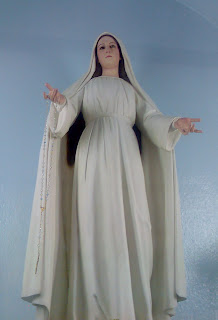The Freedom of Simplicity

Happiness is not found outside of you. It doesn't come from cars, clothes, cash, or Caribbean cruises. Happiness is found within. But how can you find it if you don't have the simplicity of time and space to discover the most important things in your life? How can you search the depths of your soul if you are too busy impressing others, acquiring wealth, protecting your properties, and paying your debts? Simplicity is not about the external either: living in a doghouse, eating in a Hepatitis joints, wearing rags. Let me define what it is: Simplicity is living from the core of your being.
LIVE ON LESS, AND DELIGHT IN THEM MORE
Some take their pleasure dining in classy restaurants, trips to Europe, and owning the latest home theatre-equipment. I've chosen the simple path: If I can simply be with my wife, or take a quiet stroll under a canopy of stars, or play with a child, or read a good book in my home, or laugh with friends over a pizza, I consider myself richly blessed. Focus on what you have and not on what you don't have.
STOP RUNNING AND WALK INSTEAD
Here's the truth: The person who has covered the greatest distance does NOT win, but the one who has most enjoyed the journey does. Stop running around chasing your own tail! Get off your hurried pace and learn to breathe. Replace doing with being. Learn to say no to invitations, appointments, and commitments, activities and events that will rob you of your focus. Learn to say "yes "to rest, to tranquillity, to quietness.
YOU ARE MORE THAN YOUR WEALTH
I own very few things today. Because I am more than the brand of my watch, the logo of my shoes, the name of my car. I believe that if in my soul I deeply respect and value myself, people around me will sense that, and they too, will value and respect me-whether I'm wearing Armani or not. You are more than your wealth.
AVOID BUYING ON CREDIT
I don't believe in borrowing from credit cards. (For convenience, I use one card but I pay the whole amount at the end of each month.) If I need something really bad, I save up for it. Sometimes, at midpoint, I realize I don't really need the darn thing and give up the whole idea. The only exception I feel we should enter into a credit is when buying a non-depreciating item, such as housing or land. I believe we should always live within our earning capacity. Proverbs 22:7 says, "Those who borrow are slaves of moneylenders."
GIVE AS MUCH AS YOU CAN
If I content myself with P250 shirt instead of P4,000 Lacoste, I can help others more. Trust me, there is immense pleasure! You will find that the empty thrill of owning a diamond ring on your finger pales in comparison to the joy of handling a piece of bread to an orphan child.
"And God is able to make all grace abound to you, so that in all things at all times, having all that you need, you will abound in every good work." (2Corinthians 9:8) The Old Testament of tithing, or giving 10% of your income is a good guideline to follow. The New Testament challenges us to give with a cheerful heart. (When you're cheerful, you may give more than 10%!) Make it a habit.
SAVE AS MUCH AS YOU CAN
Saving is essential to being good stewards of the money that God "lends" to us. Saving is an important way of providing for our future-both for our needs and to be generous to others. I recommend that you save at least 10% of your income. I can almost hear you now: "Bo, that's impossible!" Oh yeah? Well, how did you live three years back when your salary was one-half its present amount? Sacrifice. Many of our needs are actually wants. Is cable TV a need? Will you suddenly die if you can't watch CNN or HBO? Are those new golf clubs essential to your existence? Invest in time deposits, long-term stocks and housing.
BUDGET, BUDGET, BUDGET
Make a list of all your monthly expenses, according to categories. Make also a list of irregular expenses-those that don't come monthly. Set up another savings account for these expenses and put in a little money each month. To differentiate this from the savings account, we call ours freedom account" because it frees us from worrying about them when they suddenly attack. And stick to your budget!
ONE LAST WORD BEFORE WE CLOSE
Balance. Don't take living simply to the extremes! Living simply doesn't mean living in deprivation. There are special days when my wife and I eat in a fancy restaurant. Or when we splurge into a vacation. Very rare, yes, but my point is that you take living simply NOT as a rigid goal-but as a happy process towards the goals of generosity, inner peace and holiness.
Labels: Inspirational







